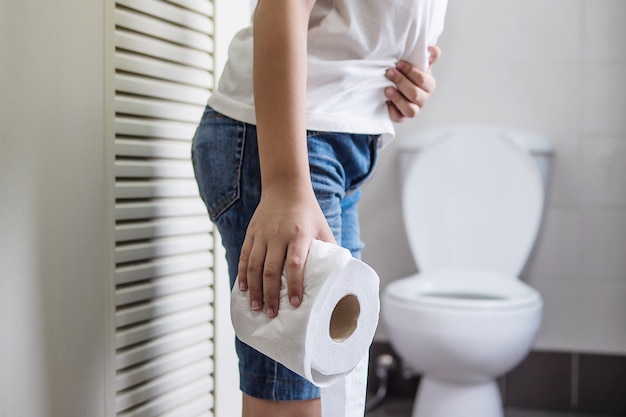
In the human body, the appendix is located in the lower right part of the abdomen. It is a small, narrow tube about 5-10 cm long that extends from the caecum, which is the first section of the large intestine. The food we eat is digested and absorbed by the small intestine, and what remains starts forming stool in the caecum before passing through the large intestine.
Although the appendix doesn’t have a function in modern humans, it is believed that it helped our ancestors digest tough foods. Nowadays, it is considered a vestigial organ, meaning it no longer has a necessary function, and people can live healthy lives without it.
Appendix pain or appendicitis occurs when the appendix gets blocked or inflamed. This can be caused by mucus, parasites, or fecal matter, leading to bacterial growth inside the appendix. If left untreated, a ruptured or inflamed appendix can cause severe pain and spread bacteria, leading to a serious condition called peritonitis. Immediate treatment is crucial, as the appendix can rupture within 24 to 48 hours after symptoms begin.
Several factors can cause appendix pain, including bacterial and viral infections, parasites, abdominal injury, fungal infections, gastrointestinal disorders, lymph tissue enlargement, and occasionally foreign objects. Some common causes include Bacteroides bacteria, adenovirus, measles, Salmonella, Shigella, appendix stones (appendicoliths), intestinal worms, and Crohn’s disease.
Signs and symptoms of appendix pain typically include:
– Pain in the lower right abdomen
– Mild fever
– Nausea and vomiting
– Loss of appetite
– Diarrhea
– Gas and bloating
Diagnosing appendix pain can be tricky because its symptoms are similar to urinary infections, gastritis, gallbladder issues, ovary issues, and Crohn’s disease. Doctors will first inquire about symptoms and medical history, then conduct a physical exam for signs such as rebound tenderness, Rovsing’s sign, and psoas signs. Further tests might include blood tests, urine tests, MRI, ultrasound, and CT scans to confirm appendicitis.
Treatment for appendix pain involves a physical exam, medical history, and relevant tests. If appendicitis is diagnosed, an immediate appendectomy (surgical removal of the appendix) may be required. The patient will be given antibiotics to prevent infection before the surgery. There are two types of appendectomy:
– **Open appendectomy:** An incision is made in the lower right abdomen to remove the appendix.
– **Laparoscopic appendectomy:** A few small incisions are made, and a laparoscope (a thin tube with a camera) guides the removal process.
Post-surgery, patients may need to stay in the hospital for observation. If symptoms have been present for less than four days, doctors might prescribe antibiotics to shrink the appendix before surgery.
After surgery, most patients can move around after 12 hours and return to normal activities within 2-3 weeks, depending on the type of surgery. Patients should see a doctor immediately if post-surgery symptoms like excessive vomiting, increased abdominal pain, dizziness, blood loss, redness around the incision, fever, or pus occur.
Though there’s no sure way to prevent appendix pain, eating a diet rich in fiber from fruits and vegetables can help reduce the chance of blockage and inflammation.
If you experience appendix pain, consult a doctor promptly, avoid self-medicating, and follow professional medical advice to avoid complications.